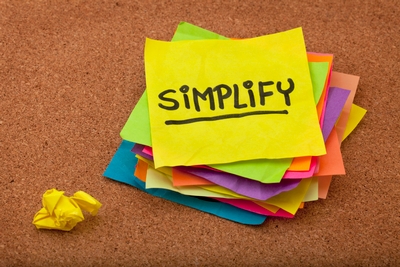WORD SIMPLE
Recognize our headline?
We (ahem!) borrowed it from a well-known tech company’s marketing campaign.
After all, the same sort of principles apply when talking simplification, whether in work or in words. At least, we think so. Route out the extraneous and the unnecessary (according to customers and users) and streamline, right?
Not. So. Fast.

Ownership of words within corporations tends to be (pick one) 1) mandated by the brand, 2) dominated by corporate functions like marketing and HR, 3) supervised by leaders, and/or 4) required by message stewards. When interminably long documents and three-paragraph sentences dominate, it’s clear that someone isn’t paying attention to the eight-second rule.
Which is now the length of our attention span.
There are all sorts of reasons why business text is so hard to understand. Like these:
“Defensive compliance” (consider annual reports and 10Ks)
“Bureaucratic tradition” (think government forms, even do-it-yourself instructions)
“Mindblindness” (the term psychologists use when folks are numb to their own knowledge).
What we know for sure is that someone (perhaps the author, maybe not) isn’t checking with his/her prospective readers, calibrating reactions, answering questions, and ensuring that at least a handful of audience members understand the points. And when the average 10K in 2013 accounted for 42,000 words, someone, somewhere just didn’t want to be understood.
Mark Twain had us at this: “I would have written that shorter, but I didn’t have the time.” [Or was it Blaise Pascal?]
 Tuesday, November 3, 2015 at 12:00PM | in
Tuesday, November 3, 2015 at 12:00PM | in  Writing
Writing 


